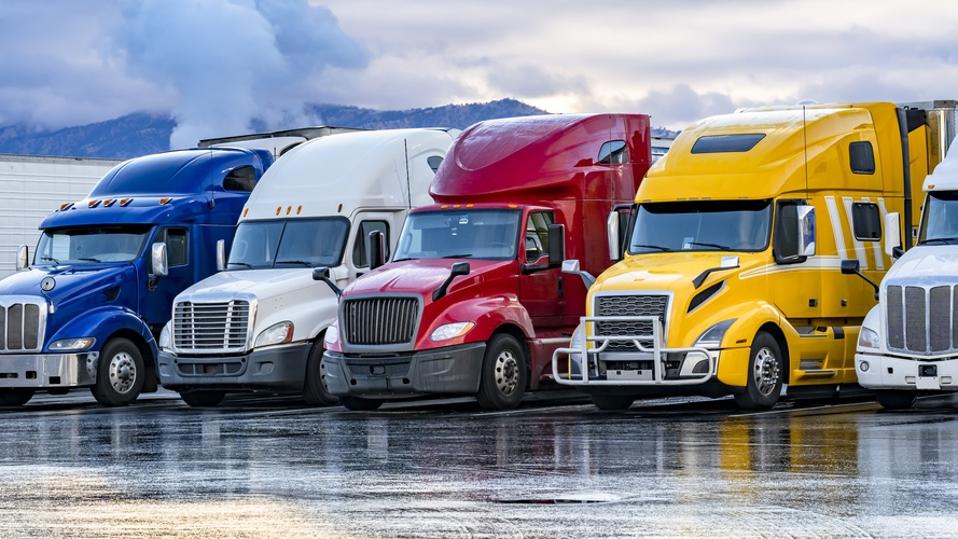Trucking attorneys—your cell phone forensics report could be missing critical data.
In a recent trucking accident case, the plaintiff’s digital forensics expert produced a clean cell phone forensics report showing no phone usage at the time of the collision. The data seemed to exonerate the plaintiff completely. But when I insisted on examining the complete forensic file instead of just the summary report, the real story emerged.
Hidden within the full dataset was evidence of extensive social media scrolling and continuous screen interaction right up until impact. The plaintiff had been actively using their phone during the accident, but this critical evidence was completely absent from the original “simplified” report.
This case illustrates a dangerous trend in digital forensics: the growing reliance on selective summary reports that may omit crucial evidence. As a trucking attorney, you need to understand that your expert must have access to the complete forensic file, not just the user-friendly summary version.
Why Your Expert Must Have the Complete Forensic File
Digital forensics has become increasingly sophisticated, with tools like Cellebrite’s Universal Forensic Extraction Device (UFED) capable of extracting comprehensive data from mobile devices. However, the industry has also developed “user-friendly” alternatives, summary reports that distill complex forensic data into digestible formats. While these reports have their place, trucking litigation is not one of them.
The problem? These simplified reports often leave out significant evidence. Understanding this distinction is crucial for trucking attorneys because the choice between complete forensic files and summary reports can determine case outcomes.
When forensic examiners connect to a mobile device, they extract all accessible data and save it in what’s called a UFED file. This raw data then gets processed through analysis software like Cellebrite’s Physical Analyzer, where it’s decoded, organized, and made searchable. From this complete dataset, examiners can generate simplified reports called UFDR files, which can contain only selected portions of the original data.
Your Expert Needs The Complete Forensic File For Several Reasons:
- Complete Access to All Evidence: The UFED file contains every piece of extractable data from the device, including system logs, application usage data, deleted content and metadata. Your expert can then determine what’s relevant to your case, not rely on someone else’s judgment about importance.
- Advanced Recovery Capabilities: Only with the complete UFED file can experts employ advanced techniques to recover deleted messages, hidden application usage, and fragmented data that could prove vital to your case.
- Independent Analysis: When your expert works with the original UFED file, they can conduct completely independent analysis without being limited by another examiner’s data selection decisions.
- Verification and Validation: The complete file allows your expert to verify findings, cross-check data integrity, and ensure no evidence has been overlooked or misinterpreted.
Complete Forensic Files (UFED):
- Contain all extracted data, processed and unprocessed
- Include system logs, application data and contextual information
- Allow for advanced recovery of deleted content
- Require specialized software and expertise to analyze
- Typically gigabytes in size
Summary Reports (UFDR):
- Contain only selected data categories
- Focus on common elements like messages and media
- Easy to view and share
- Significantly smaller file sizes
- Involves human decision-making in data selection
Cell Phone Forensics Reports: The Cherry-Picking Problem
The fundamental issue isn’t primarily technical, it’s human. When creating summary reports, digital forensic examiners choose which data to include. This selection process creates several serious problems:
- Incomplete Picture: By including only certain data points, reports may present a misleading view of events. Critical system logs, application usage data or deleted content might be filtered out if the examiner doesn’t recognize their significance.
- Bias Introduction: Whether intentional or not, the selection process can introduce bias into evidence presentation. An examiner’s case theory or personal assumptions about relevance can influence which data makes it into the final report.
- Missing Context: Important contextual data might be omitted if it’s not recognized as significant. Timestamps, system events or background processes that provide crucial context may be excluded from user-friendly reports.
- Potential for Abuse: This feature could be misused to present only data supporting a particular narrative, potentially obscuring exculpatory evidence that exists in the complete file but gets filtered out during report generation.
Real-World Impact: The Cost of Incomplete Cell Phone Evidence
In the trucking case mentioned earlier, the plaintiff’s expert’s selective report would have supported a multi-million-dollar judgment. The complete forensic file revealed evidence that completely changed the case outcome:
- Hidden app usage in the minutes before the accident that showed extensive social media scrolling, activity completely absent from the summary report
- Screen interaction logs proving continuous phone manipulation, captured in system logs that weren’t included in the simplified report
This evidence was completely absent from the summary report, demonstrating how selective data presentation can obscure the truth. The difference between these two data sources wasn’t just technical detail, it was the difference between a potential defense verdict and a multi-million-dollar plaintiff judgment.
This case perfectly illustrates why your expert must work with the complete UFED file rather than accepting a UFDR summary. The plaintiff’s expert had access to all the data but chose to present only selected portions in their UFDR report. A defense expert working only with that limited UFDR file would have been unable to uncover the crucial evidence that changed the case outcome.
Beyond Cellebrite: A Universal Digital Forensics Problem
While Cellebrite dominates the mobile forensics market, this issue extends across all major forensic platforms. Virtually all digital forensic tools have capabilities to generate selective reports that may omit crucial evidence.
The fundamental principle remains the same: any time a forensic examiner creates a summary report, they’re making choices about what to include. In high-stakes trucking litigation, you cannot afford to rely on someone else’s judgment about what evidence is “relevant.”
This problem becomes particularly acute when opposing counsel provides forensic reports rather than complete files. What appears to be cooperation in discovery may actually be strategic limitation of evidence access. The examiner who created the report may have filtered out data that could be favorable to your case, either intentionally or through oversight.
Cell Phone Forensic Data: What Trucking Attorneys Must Demand
Always Insist Your Expert Gets the Complete UFED File: Never allow your expert to work only with a UFDR summary report. Whether it’s a Cellebrite UFED file, a Magnet AXIOM case file, or another platform’s native format, your expert needs access to all available data to provide comprehensive analysis.
Ask the Right Questions of Opposing Counsel:
- What type of extraction was performed and what forensic platform was used?
- Will my expert receive the complete original extraction file or just a selective report?
- What data might be missing from any summary reports provided?
- Can you guarantee that no relevant data has been filtered out?
- What criteria were used to select data for any summary reports?
Negotiate Discovery Protocols: Specifically request complete original extraction files in discovery negotiations, not selective reports from any forensic platform. Make this standard language in your discovery requests and protective orders. Don’t accept arguments that UFDR files are “easier to work with” or “contain all the relevant data.”
Work with Qualified Experts: Ensure your digital forensics expert understands the critical importance of working with complete data files and has the specialized software needed to analyze original extraction files effectively. Your expert should be the one educating you about why complete files matter and should refuse to work with incomplete UFDR summaries when complete UFED files are available. If your expert isn’t insisting on complete files, you need a different expert.
Digital Evidence: The Stakes Are Too High for Shortcuts in Trucking Litigation
In an era where digital evidence can make or break trucking cases worth millions, the convenience of simplified forensic reports comes with hidden costs. The case that seems clear-cut based on a summary report may tell a completely different story when your expert examines the complete forensic file comprehensively.
The difference between complete forensic files and selective reports isn’t just technical, it’s about ensuring your expert has access to all available evidence that could protect your clients. While summary reports offer convenience, they also introduce the risk of missing crucial evidence that could change case outcomes entirely.
Remember: Your expert cannot find evidence they cannot access. If crucial data exists only in the complete UFED file but gets filtered out of the UFDR summary, your expert will never know it existed. This isn’t just about thoroughness; it’s about ensuring your expert can provide the most comprehensive analysis possible for your trucking case.
Cell Phone Forensic Files: Best Practices for Trucking Attorneys
As digital evidence becomes increasingly central to trucking litigation, trucking attorneys must adopt best practices that prioritize giving their experts complete data access over convenience:
- Default to Complete Files for Your Expert: Make complete forensic extractions the standard requirement for your expert’s analysis, not the exception. Build this requirement into your standard discovery templates and case management procedures.
- Educate Your Team: Ensure all case team members understand the differences between complete files and summary reports, and why your expert needs the complete UFED file. This includes paralegals, associate and support staff who may be handling digital evidence requests.
- Budget Accordingly: The cost difference between having your expert analyze complete files versus summary reports is negligible—especially considering thorough expert analysis could prevent a trucking case from going nuclear.
- Verify Expert Capabilities: Ensure your forensic experts have the specialized software and training necessary to analyze complete forensic files from all major platforms. Don’t assume all experts can work with original UFED files.
- Let Your Expert Guide You: Your digital forensics expert should be educating you about the importance of complete data access and advocating alongside you for obtaining complete UFED files. If your expert isn’t insisting on complete files, find a new one.
The question isn’t whether you can afford to have your expert conduct comprehensive forensic analysis, it’s whether you can afford to have your expert base their analysis on potentially incomplete information. In high-stakes trucking litigation, giving your expert the complete picture isn’t just preferable; it’s essential for effective representation.
Don’t let summary reports create blind spots in your case strategy. When millions are on the line, demand the complete story that only full forensic files can provide.




